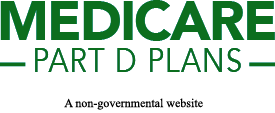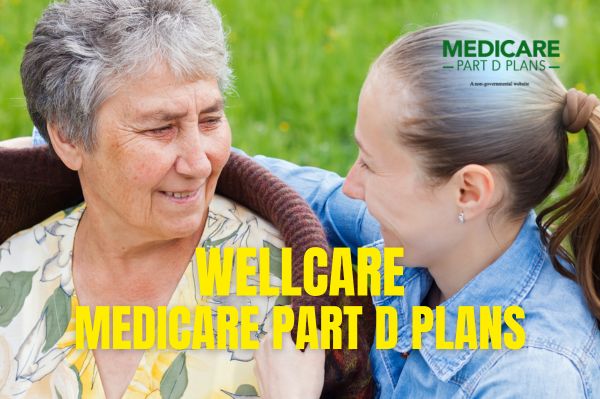Find a Medicare Part D prescription drug plan

Medicare Part D
Prescription Drug Coverage 2026
Wellcare Medicare Part D
Wellcare Medicare Part D plans help cover the cost of prescription drugs, likely making them an essential component of healthcare for many seniors.
This article will guide you through the different Wellcare Medicare Part D plans, their potential costs, coverage details, and enrollment periods. Understanding these elements will help you choose the best plan to meet your needs.
Key Takeaways
- Wellcare Medicare Part D plans will likely cover prescription medication costs and offer flexible enrollment options during the Annual Enrollment Period.
- The plans might vary in type, with Stand-alone PDPs for Original Medicare and MAPD plans that combine health and drug coverage, likely catering to different beneficiary needs.
- Various cost-saving opportunities, such as the Extra Help program, preferred pharmacies, and wellness programs, could potentially reduce out-of-pocket costs for beneficiaries.
Overview of Wellcare Medicare Part D Plans
Wellcare Medicare Part D plans will likely be designed to help cover the costs of prescription medications, possibly making essential treatments more accessible to beneficiaries. These plans are particularly crucial during the Annual Enrollment Period, which runs from October 15 to December 7 each year.
During this time, beneficiaries can switch, enroll, or disenroll from their plans, with changes taking effect on January 1 of the following year. This flexibility likely ensures that individuals can choose the plan that best meets their changing healthcare needs.
Knowing the different types of Wellcare Medicare Part D plans, their associated costs, and plan details are crucial for making an informed decision.
Whether you’re new to Medicare or considering changing your plan, having a clear grasp of these factors could help you navigate the enrollment process seamlessly, as costs may vary depending on the plan.
Types of Wellcare Medicare Part D Plans
Wellcare will likely offer a variety of Medicare Part D plans that could cater to different needs and preferences. For those enrolled in Original Medicare, Wellcare may provide Stand-alone Medicare Part D Prescription Drug Plans (PDPs).
These plans will likely focus solely on prescription drug coverage, allowing beneficiaries to complement their traditional Medicare benefits. On the other hand, Wellcare’s Medicare Advantage Prescription Drug (MAPD) plans combine health and drug coverage into a single plan, possibly offering comprehensive care under one roof.
Wellcare’s Medicare advantage plans may come in various forms, including Health Maintenance Organization (HMO) and Preferred Provider Organization (PPO) plans.
Some of these plans may feature low or no deductibles and may sometimes offer additional benefits such as dental, vision, and hearing coverage, along with health insurance options. The effectiveness of these plans will likely depend on individual needs and preferences.
When considering prescription drug coverage in health plans:
- HMO or PPO plans should include prescription drug coverage and cannot be combined with stand-alone PDPs.
- For Private Fee-For-Service (PFFS) plans, check if prescription drug coverage might be included.
- If PFFS plans do not include prescription drug coverage, a stand-alone PDP may be necessary.
In 2023, Wellcare offered over 102 PDPs nationwide across 34 regions, likely ensuring a wide range of options for beneficiaries.
Potential Costs Associated with Wellcare Medicare Part D Plans
Wellcare’s Medicare Part D prescription drug plans might have varying costs. These differences will likely depend on factors such as the specific plan selected, the location, and individual healthcare needs. These costs might include premiums, deductibles, and coinsurance, which could add up over time.
However, eligible beneficiaries may access the Extra Help program, which could potentially reduce these costs. This program might be a lifeline for low-income individuals, possibly ensuring that they can afford their necessary medications.
To manage these expenses effectively, it’s essential to understand the various cost components:
- Premiums: the monthly payments required to maintain coverage.
- Deductibles: the amounts paid out-of-pocket before the plan begins to cover costs.
- Coinsurance: the percentage of the medication cost that beneficiaries are responsible for paying, such as cost sharing amounts
Understanding these elements may allow beneficiaries to better manage their healthcare expenses.
Coverage Details of Wellcare Medicare Part D Plans
Wellcare Medicare Part D plans will likely offer Medicare prescription drug coverage, possibly ensuring that beneficiaries could have access to a wide range of medications. This coverage might include both brand-name and generic drugs, likely allowing for flexibility and cost savings.
By enrolling in these plans, beneficiaries may be able to reduce their out-of-pocket prescription drug expenses and enjoy the various benefits of a prescription drug plan.
One potential advantage of Wellcare Medicare Part D plans could be their affordability. These plans may provide excellent value for beneficiaries through:
- Low monthly premiums
- Coverage for thousands of medications
- Various ways to minimize costs, such as utilizing preferred pharmacies
- Potential discounts on health-related products
Formulary and Covered Drugs
The formulary for Wellcare Medicare Part D plans is a carefully curated list of medications that are covered under the plan. This formulary might include:
- Drugs categorized into different tiers based on their cost, with Tier 1 drugs often available at no cost for a 90-day supply.
- Inclusion of both generic and brand-name drugs.
- Ensuring beneficiaries could have access to a wide range of treatment options.
Members should verify if their specific prescriptions are listed on the formulary to avoid unexpected expenses. The formulary system may also help to manage out-of-pocket costs by providing a structured approach to drug pricing, likely making medications more affordable for beneficiaries.
Network Pharmacies and Access
Access to medications will likely be a critical component of Wellcare Medicare Part D plans. Members may refill their prescriptions at a network of participating pharmacy locations, such as major chains like CVS and Walgreens, as well as regional stores and independent pharmacies. This extensive network could potentially ensure that beneficiaries may conveniently access their medications regardless of their location.
For added convenience, Wellcare may also offer a Medication Home Delivery service that might:
- Allow members to receive their prescriptions delivered directly to their homes.
- Particularly beneficial for those with mobility issues.
- May be ideal for those who prefer the convenience of home delivery.
By utilizing the network pharmacies and home delivery options, members will likely ensure they have timely access to their medications.
Enrollment Information for Wellcare Medicare Part D Plans
Enrolling in Wellcare Medicare Part D plans is a straightforward process, with multiple methods available to suit different preferences. Individuals can enroll through this website or by calling one of our licensed agents at 1-866-930-4039 (TTY 711) Mon-Fri: 8am-8pm EST. Understanding the key enrollment periods is crucial for maximizing coverage and avoiding penalties.
The enrollment process includes several key periods: the Initial Enrollment Period, Special Enrollment Periods, and the Annual Enrollment Period.
Each of these periods provides specific opportunities for beneficiaries to enroll or make changes to their plans, ensuring that their coverage aligns with their healthcare needs.
Initial Enrollment Period
The Initial Enrollment Period is a critical time for new Medicare beneficiaries to sign up for Wellcare Medicare Part D plans. This seven-month period starts three months before an individual’s 65th birthday and ends three months after. Enrolling during this period ensures that there is no gap in prescription drug coverage as beneficiaries transition to Medicare.
Failing to enroll during the Initial Enrollment Period can result in a late enrollment penalty, which may increase the overall cost of coverage. Therefore, it’s essential to take advantage of this period to secure continuous and affordable prescription drug coverage.
Special Enrollment Periods
Special Enrollment Periods are triggered by qualifying life events, such as moving to a new area or losing existing health coverage. These periods provide a two-month window for beneficiaries to enroll in a Wellcare Medicare Part D plan after the qualifying event.
These periods allow beneficiaries to adjust their coverage to changing circumstances without facing penalties.
For instance, if a beneficiary moves to an area where their current plan is not available, they can use the Special Enrollment Period to switch to a Wellcare Medicare Part D plan that suits their new location.
Annual Enrollment Period
The Annual Enrollment Period, occurring each year between October 15 and December 7, is crucial for making enrollment adjustments. During this time, current and prospective members can review their coverage options and make changes or enroll in a new plan.
Any changes made during this period take effect on January 1 of the following year.
This period could be particularly important for those who want to adjust their coverage based on their evolving healthcare needs. Whether you’re looking to switch plans or enroll for the first time, the Annual Enrollment Period is the ideal time to ensure your prescription drug coverage meets your needs.
Cost-Saving Opportunities with Wellcare Medicare Part D Plans
Wellcare Medicare Part D plans will likely offer numerous cost-saving opportunities to help beneficiaries manage their prescription drug expenses. One of the primary ways to save might be using the network of pharmacies, which may include preferred providers that might offer lower costs.
These pharmacies may include major chains like CVS and Walgreens, likely providing convenient options for filling prescriptions.
Besides network pharmacies, Wellcare Medicare Part D plans may also provide extra perks like preventive services and discounts on health-related products. These potential benefits might extend beyond standard drug coverage, possibly aiding beneficiaries in maintaining overall health while saving on medication costs.
Extra Help Program
The Extra Help program will likely be a significant benefit for eligible low-income individuals, helping to reduce their prescription drug costs under Wellcare’s Medicare Part D plans. This program may cover a substantial portion of costs, such as premiums and deductibles, likely making medications more affordable.
Individuals who receive full Medicaid coverage or Supplemental Security Income (SSI) may automatically qualify for Extra Help through the state Medicaid program. This program could act as a lifeline for those struggling with medication expenses, ensuring they get the necessary treatments without financial strain.
See plans in your area instantly!
Advertisement
Preferred Pharmacies and Discounts
Using preferred pharmacies within the Wellcare network may also lead to significant savings on prescription drugs. These pharmacies may offer reduced copayments, such as $0 copays for Tier 1 medications.
By choosing preferred pharmacies, beneficiaries could potentially lower their out-of-pocket expenses and access their medications at a more affordable rate.
Additionally, some Wellcare plans might feature additional savings on drugs, which might further reduce the financial burden on beneficiaries.
By leveraging these potential discounts and using preferred pharmacies, members could maximize their savings on wellcare prescription insurance costs and enjoy their plan benefits.
Additional Benefits and Services
Wellcare Medicare Part D plans may offer various additional services aimed at enhancing member health and well-being. These services may go beyond standard drug coverage, possibly providing comprehensive support to help members manage their health effectively.
For example, Wellcare might offer wellness programs focusing on preventive care and lifestyle management. These programs will likely support physical and mental health, promoting healthier living among members.
Medication Therapy Management
The Medication Therapy Management (MTM) program may be one of the standout services that might be offered by Wellcare Medicare Part D plans. This program will likely assist members in managing complex medication schedules by providing personalized consultations with healthcare professionals.
The goal of MTM will likely be to optimize medication use, potentially reduce the risk of medication-related problems, and improve overall health outcomes.
Through the MTM program, members may receive individualized care that focuses on coordinated care of their medications, identifying potential interactions, and ensuring that their drug regimen is as effective and safe as possible.
This personalized approach could be especially beneficial for individuals taking multiple medications, as it could streamline their treatment plans and possibly reduce adverse effects.
Find a Plan and Enroll Online Yourself!
Advertisement
Summary
Wellcare Medicare Part D plans will likely offer comprehensive prescription drug coverage and a range of additional benefits that could support the health and well-being of beneficiaries. From various plan types and potential cost-saving opportunities to personalized services like Medication Therapy Management and wellness programs, Wellcare will likely provide robust support to help manage healthcare needs.
By understanding the enrollment periods and leveraging available resources, beneficiaries can make informed decisions to enhance their healthcare experience.
Frequently Asked Questions
What is the Annual Enrollment Period for Wellcare Medicare Part D plans?
The Annual Enrollment Period for Wellcare Medicare Part D plans is from October 15 to December 7 each year, with changes taking effect on January 1 of the following year.
What types of Medicare Part D plans does Wellcare offer?
Wellcare will likely offer several types of Medicare Part D plans, including Stand-alone PDPs, MAPD, HMO, PPO, and PFFS plans, each designed to cater to varying healthcare needs. It’s essential to review the specifics of each plan to find the best fit for your situation.
How could beneficiaries save on medication costs with Wellcare Medicare Part D plans?
Beneficiaries may effectively save on medication costs with Wellcare Medicare Part D plans by utilizing preferred pharmacies and enrolling in the Extra Help program. This strategic approach could potentially maximize savings on prescriptions.
What is the Initial Enrollment Period for Medicare beneficiaries?
The Initial Enrollment Period for Medicare beneficiaries span seven months, beginning three months before the 65th birthday and concluding three months after. It’s crucial to enroll during this time to ensure health coverage.
What additional benefits and services could Wellcare Medicare Part D offer?
Some Wellcare Medicare Part D plans may provide additional benefits such as Medication Therapy Management, wellness programs, preventive care services, and health improvement resources that could enhance your overall health management. These services will likely complement the standard drug coverage, supporting a more comprehensive approach to your healthcare needs.
Begin Choosing your plan
Advertisement
ZRN Health & Financial Services, LLC, a Texas limited liability company.

